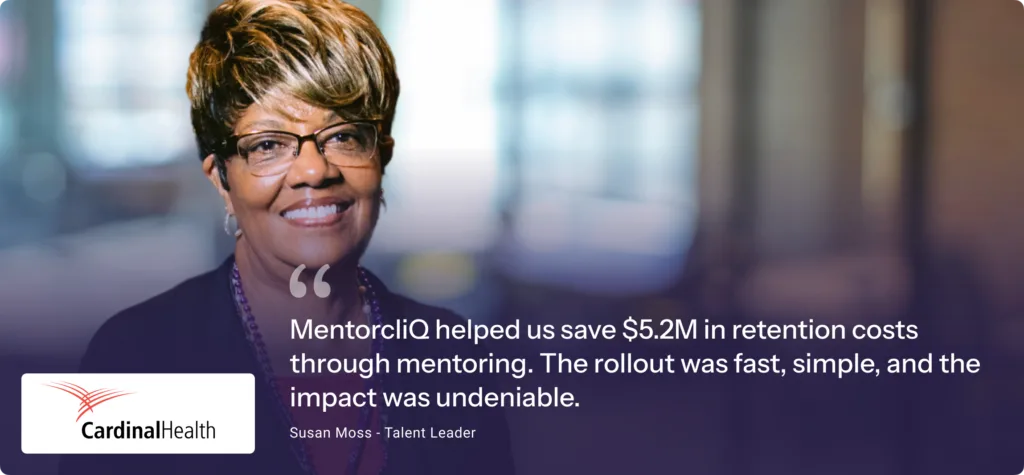Do you like learning? While some of us might think that our years in the classroom are far behind us, our jobs should offer us the chance to improve the skills we already have.
Do you have exactly the same skill set that you entered the job market with? Of course not, you have learned and grown in your role and you should hope to do so throughout the rest of your career too. However, you do need to consider whether these new skills have been gained through on-the-job experience or dedicated training programs.
There is, of course, nothing wrong with the former! But if you choose to support your employees with learning and development programs, you will undoubtedly soon see the benefits of upskilling. Let’s dive into this world and find out more about what upskilling can offer your teams.
What Is Upskilling?
Upskilling is all about building up your skills and plugging your skill gaps to make you even more of a force to be reckoned with in your chosen field. We all use a very specific set of skills in our tasks and roles, and these should be worked at if we want to prove ourselves useful to ourselves and the companies we work for.
Even the most established roles have room to evolve and grow, and their practitioners need to be able to keep up. Employees need the tools to stay relevant and competent in their niches, no matter how specialized or generalized their responsibilities may change.
Disruptions and evolutions requiring upskilling might look like:
- Tech changes: After all, just look at how computers have taken over the workplace across the past few decades.
- Legal and compliance: Laws are changed and altered every day, and companies must answer to their industry regulators.
- Company restructuring: Whether your company is bought over, layoffs come by, or the company structure is due for an update, internal change can bring with it the need to upskill.
Do Employees Want to Learn?
When our days are packed with tasks and responsibilities, adding learning and development on top of this can feel just like one too many things to do in the day. However, time and time again, learning new skills and developing our existing knowledge bases proves to be a top priority for many.

LinkedIn’s Workplace Learning Report for 2025 found that 91% of L&D pros agreed that continuous learning is more important than ever for career success. The same report also discovered that, while 88% of organizations are concerned about employee retention, providing learning opportunities is also a top retention strategy to help prevent an exodus.
There will always be some people who are happy to sit and just do their job with no desire to improve themselves. However, if given the option, many people will want to explore the options open to them when it comes to developing their skills. Organizations should want their people to flourish and be the best they possibly can be, and this desire needs to be reflected in a willingness to allow the upskilling and reskilling of their employees.
Is Upskilling and Reskilling the Same Thing?
We have mentioned employee reskilling a few times so far, so we just wanted to take a small aside to explain how reskilling differs from upskilling. Some workplaces make the mistake of using them interchangeably when there is, in fact, a subtle difference between them.
Upskilling is the process of learning new or enhancing current skills that are relevant to your current role. In many cases, you may have a foundational knowledge of a given skill that you then improve through upskilling. It’s all about becoming better at what you already do.
Reskilling, on the other hand, is about preparing for a new role. If you want to make a lateral move to another department, you might currently be lacking some of the skills needed to flourish there, whether these are soft skills or technical ones. Either way, reskilling should help fill in the gaps and help you remain competitive.
| Examples of Upskilling | Examples of Reskilling |
|---|---|
| A digital marketer learns advanced SEO techniques. | An administrative assistant trains in cybersecurity to join the IT team. |
| A software developer learns a new programming framework and language. | A copywriter learns how to use Figma to work towards becoming a UX/UI designer. |
| A team leader undergoes leadership training to take on more strategic responsibilities. | A bookkeeper studies legal and regulatory frameworks to move into a compliance role. |
Why Should We Learn New Skills?
Surely once we have acquired the skills we need to apply for a job, that is it? We will get that role and just be able to work at it until either we retire, or we will set out into the job market to find a new position that suits us better. That’s how the world of employment works, right?
Learning new skills and knowledge should be something that everyone inherently wants to do simply because it comes with so many benefits, for both companies and employees. On a business level, by choosing to invest in employee learning, organizations can see the following gains:
- Better employee engagement: Employees are happier and more confident in their skills and, therefore, feel more able and willing to engage with their workloads.
- Greater retention rates: When employees are engaged and satisfied with their work and the company, they are more likely to stay in their roles than look for new ones elsewhere.
- Reduced recruitment costs: Rather than pour money into an external recruitment campaign, upskilling initiatives can empower internal mobility and help employees climb the corporate ladder to management.
Of course, most of the benefits of upskilling belong to employees. They are the ones putting in the work to ensure that they are retaining new information and how to put it to good use. Employees who choose to engage with skill development as part of their current role can see the following benefits come their way:
- Development of career goals: Every employee should have a career path mapped out for them to follow. Training programs and skills development should provide the springboard employees need to follow their intended career paths.
- Becoming a competitive candidate: Whether an employee moves to another company or has their eye on career growth and a new position within their current organization, skills development helps them become a more competitive and attractive candidate.
- Seeking out new opportunities: From gaining skills and knowledge comes the confidence to seek out new opportunities, whether these are growth opportunities like a promotion, an opportunity to lead a project or even a completely new role.
- Continuous learning and self-improvement: Upskilling programs give us the chance to dive into continuous learning and self-improvement paths. Self-improvement can help us all feel more confident in our decisions and can give us the boost we need to advocate for ourselves at work.
Learning new skills takes time and commitment, no one is denying that. But it can be one of the very best opportunities given to your employees when utilized correctly. Career development does not happen in a vacuum, and learning and professional development need to be given adequate space within a company if it is to be honored correctly.
How to Set Up Upskilling Programs
If you are interested in setting up a formal upskilling program to promote employee development in your company, you need to make sure that it is properly structured. By just announcing that you are interested in offering employee learning and development if people want it, you are not actually offering any sort of opportunity for them to pursue.
Instead, management should take the time to properly structure and launch any upskilling or training programs for employees. Some of the steps that can be considered in doing so include:
1. Identify skill gaps
There’s no point in offering skills development and upskilling to employees if it does not meet their needs. Through surveys and performance reviews, try to identify some of the skill gaps that currently exist within the company, and then create programs that meet the needs of those who will be participating.
2. Find out how employees like to learn
Everyone learns slightly differently, and balancing learning preferences can be difficult in big companies. Some employees might wish to fit their learning modules around their workloads, so online courses might be best. Others might want a collaborative approach with perhaps a full-day in-person session with a coach. There is no right or wrong way to learn, but compromise may have to be made in places.
3. Align with business goals
Though upskilling should predominantly support employees, it should still align with the goals and plans of the overall business goals and needs of the organization. Management needs to define clear key performance indicators (KPIs) or SMART goals for the program so that impact and success can be tracked further down the line.
4. Create personal development programs
Employees entering the upskilling program can’t be allowed to just drift aimlessly with no idea as to what opportunities are open to them. As part of their yearly review, they should be invited to work with their manager to create personalized development plans, based on their personal goals, preferred career path, and current skill set.
5. Consider bringing in 3rd party help
Don’t make the mistake of thinking that any learning programs need to be developed in-house. There are a ton of platforms and software on the market that can teach your employees the skills they want to learn. Reaching out to external coaches can also bring a perspective that is not clouded by a manager’s own bias or experience of the company. Third-party help doesn’t mean you don’t have the resources to build a good program yourselves, it just means that someone has more.

6. Make sure the program is visible and accessible
With all of this effort gone into creating the program, you need to ensure that it is both visible and accessible so that employees know it is for them. Send out announcements to invite everyone to sign up, encourage managers to discuss it with their juniors, make it part of onboarding, and ensure that everyone knows where to find the learning platform in the company’s internal system.
7. Monitor progress and measure impact
Remember those goals you set when setting up the program? Every initiative set up in your company needs to be measured and monitored to ensure that it reaches its intended potential. By measuring the impact of the program and the satisfaction of its users, adjustments can be made as needed to ensure it remains popular and effective.
7 Common Types of Upskilling Programs for Your Organization
Upskilling opportunities can take various shapes and forms. After all, your employees are all individuals and so they will all want and need different things from their training programs. Some will want to develop their technical skills; others may want to look for ways to expand their experiences and put their soft skills into practice.
For this reason, it is not uncommon to offer several upskilling programs or tracks for employees to explore.
1. Mentoring
Mentoring is a fantastic opportunity for both mentors and mentees alike. When done properly, it is a structured initiative designed to develop an employee’s capabilities through expanding their knowledge, improving their skills, and/or preparing them for future roles.
2. Job rotation and cross-training
This can be great for new starts who are unsure where they want to end up in the company, but it can equally work for old hands who are ready to shake up their routines a bit. It works by employees being temporarily assigned to different roles and departments around the company. This helps them to gain a broader experience across the organization and a more holistic understanding of the business.
3. Internal workshops
Internal workshops may be what most people think of when they picture upskilling: in-house learning sessions led by subject matter experts. These can be delivered either in person, in a group, or on a one-on-one basis, depending on how niche the subject matter is, or they can be delivered online to be completed at the employee’s leisure.
4. Leadership development tracks
High-potential employees may be invited to join targeted leadership development programs to prepare them for a future role. Even if they are currently very far away from management, organizations will want to nurture their top talent closely. This can involve executive coaching, strategy development, and may also tie in with other programs listed here such as mentoring.
5. Technical upskilling and certification
Technical training and certification help to demonstrate an employee’s proficiency in a given area. With many companies operating to certain standards, certification proves that a learner understands what is expected of them, especially if that certification comes from an accredited third party.
6. Peer coaching
Sometimes, the best people we can learn from are sitting right beside us. Putting small groups of employees together for peer coaching can build rapport within teams and give people accountability support through structured discussions and feedback.
7. Lunch and Learn sessions
Quick and easy, Lunch and Learn sessions are a great way to build both soft and technical skills depending on the topic at hand. They should be informal and open to everyone; just come along and be ready to learn. If you have the resources, put on lunch. If not, ask everyone to bring their own. They encourage peer learning and can be great for developing that all-important culture of continuous learning.
Share the Knowledge and Keep On Learning!
Employees need to be encouraged to learn new skills and consistently develop their existing ones. Management should strive to make their workers the best they can possibly be, and this involves learning and developing skills.
Many of these learning experiences may overlap. For example, one employee may undertake an accredited certification to gain technical knowledge. Still, they may be introduced to a mentor to help them take that knowledge and implement it practically.
You won’t be shocked to hear that, at MentorcliQ, we believe mentoring is the vehicle for many great learning experiences and initiatives. With the right mentor at their side, a mentee has the chance to pull from a vast range of knowledge and experience and bring it into their own wheelhouse to make themselves an even better expert in their field. They can advance to management, really delve into their technical niche, or even switch to a completely new field and hit the ground running.
Don’t let the admin and workload of a mentoring and learning scheme impact the program administrator’s tasks. MentorcliQ’s mentoring software takes the hard work out of matching and monitoring your employees, allowing the focus to remain on upskilling your workforce and preparing them for the next stage in their careers.
Book a demo with us today and find out how mentoring can transform your continuous learning targets for the betterment of your entire team.




